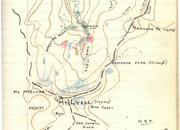Why study the history of the Museum of Vertebrate Zoology (MVZ)?
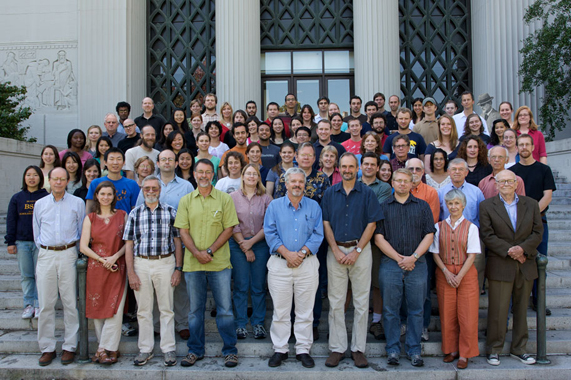
In 2008, the MVZ celebrated its centennial with a variety of commemorative events, including the staff photograph depicted above. As the MVZ developed during the twentieth century, the life sciences underwent a transformation. Studying the MVZ therefore offers a window onto these changes. Yet the MVZ is also an interesting institution in its own right, in part because it weathered a tumultuous period for natural history museums and emerged as a leader in a variety of research areas, including evolutionary genetics and bioinformatics. Tracing the MVZ’s development as a research institution tracks the history of doing natural history. Although some of the same evolutionary questions have inspired research throughout the century, many new questions arose as faculty curators, staff, and students adapted to tremendous technological change. Joseph Grinnell, the MVZ’s founding director, envisioned the MVZ as a research center. For over a century the MVZ has attracted professionals and amateurs, researchers and students, who maintained the MVZ’s status by developing new ways to study old museum specimens; it is these people, and their reinvention of natural history practices that make the MVZ such an interesting institution.
Why was the Museum of Vertebrate Zoology established?
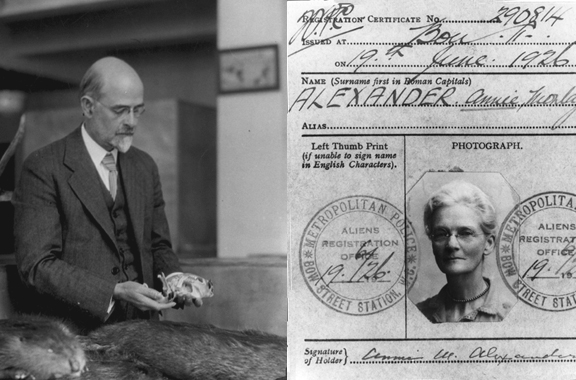
The Museum of Vertebrate Zoology (MVZ) owes its existence to the generosity, enthusiasm, and vision of Annie M. Alexander (1867-1950), an avid naturalist and heir to the C & H Sugar Refining Company fortune. With her money, Alexander aspired to establish a museum of natural history on the west coast that could rival those on the east and recognized Joseph Grinnell as the right person to help realize her dream. Together, they designed the Museum of Vertebrate Zoology (MVZ) to achieve a very long-term research goal: study evolution in the diverse and dynamic Californian environment. From the beginning, the MVZ was primarily a private research institution rather than a public space.
In 1908, when the museum was founded, there was fairly widespread support in the scientific community for Darwin’s general theory of evolution, but substantial disagreement about whether natural selection was a sufficient explanatory mechanism. The MVZ was set up as a scientific resource to facilitate studies of speciation and evolutionary mechanisms. California was appealing for a number of reasons: 1) it was strikingly diverse, 2) it was rapidly undergoing dramatic changes due to the development of the west coast, and 3) its fauna were relatively undocumented, and had not been surveyed systematically in a way that would enable proper and prolonged scientific analysis.
Who has worked at the Museum of Vertebrate Zoology?
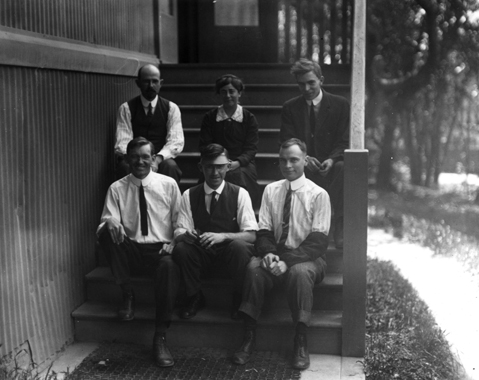
Natural historians look very different today than they did at the beginning of the twentieth century. In fact, the work of natural historians has changed so dramatically that the label has become somewhat of an anachronism. During the past century a multitude of modern technologies shaped new approaches and specified fields and disciplines. Natural historians became evolutionary biologists, ecologists, conservation biologists, population geneticists, and functional morphologists. While the identification, and the day-to-day job descriptions have changed, many of the overarching questions about the mechanisms of evolution and development have remained constant.
When the MVZ first opened in 1908 the staff consisted of Director Joseph Grinnell and a handful of contracted field collectors. Within a couple of months there were three more salaried staff helping with management of the collections. By 1915 a staff of five, depicted in the photo above, and a handful of graduate students were working with the collections, in addition to two part time office personnel.
During Grinnell’s directorship (1908-1939) the MVZ grew substantially. By 1943 the MVZ officially employed ten people: four curators, four curatorial assistants, two research assistants, a secretary, a stenographer, a bibliographer, and an Artist/Technical Assistant. Expansion of the MVZ’s population has continued, and today includes 108 people; notably, most are engaged in research.
Where has the MVZ been housed?
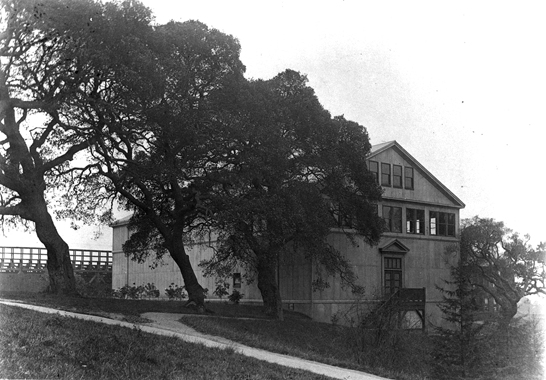
The collections, offices, and laboratories of the Museum of Vertebrate Zoology (MVZ) have inhabited three successive spaces on the University of California, Berkeley campus. The MVZ’s first building was constructed of galvanized iron for $15,000 (of which $7,000 was donated by Annie Alexander) near Faculty Glade, across the creek from the Campanile. In 1930 the Museum moved into the west end of the new Life Sciences Building, a $2,000,000 structure, built with funds provided by the people of California through a bond issue voted in 1926. (The old building was then used as an art annex and was torn down in 1964 “to improve campus landscaping.”) The opening announcement for the new building exclaimed, "The west end is devoted to the Museum of Vertebrate Zoology, finest of its kind in the West." The new location included three stories of open gallery space to house the growing number of zinc specimen cabinets. Offices and laboratories were located along the north and south sides of the gallery. After the Life Sciences Building was renovated in 1993, the MVZ moved into one main level for the collections, plus space on other floors for laboratories and specimen preparation.
